Hearthstone‘s The Great Dark Beyond expansion is all about the Draenei race’s tragic exile from Argus and their journey through space, and both the Draenei and the concept of space travel itself are represented strongly through the expansion’s new game mechanics. A host of new Draenei minion cards express the race’s hopefulness by leaning into forward-thinking interactions, while the Hearthstone expansion’s starship mechanic sees players combining cards to assemble powerful class-specific starships.
Game Rant sat down with Hearthstone senior game designer Leo Robles Gonzalez and senior VFX artist Luke Mason to discuss the latest expansion’s development process. They weighed in on the importance of creating Draenei cards that authentically reflected the race’s identity, how they designed spacecraft without leaning too heavily into sci-fi, and how the new cards fit into Hearthstone decks of various playstyles. This interview has been edited for brevity and clarity.
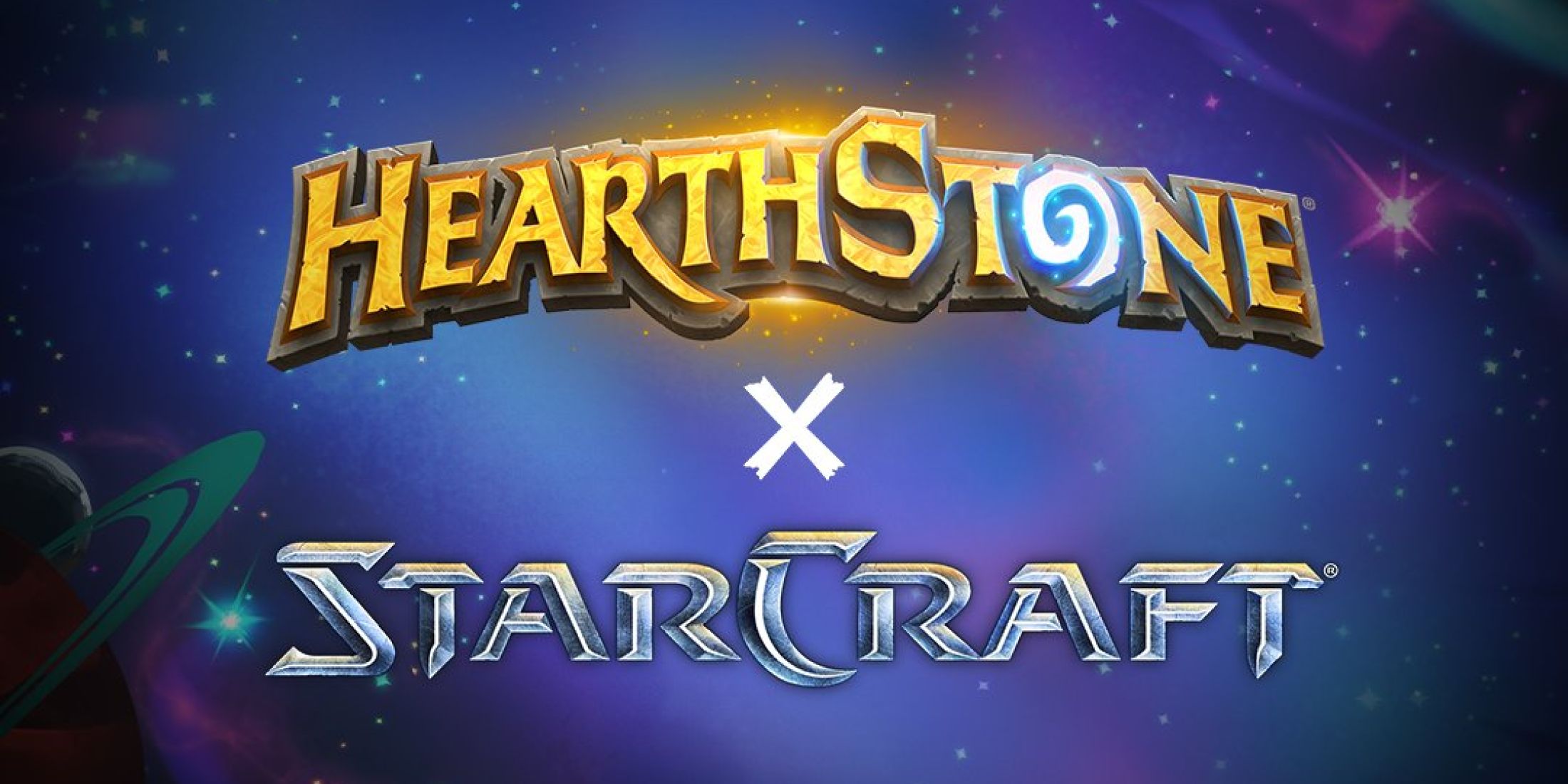
Related
Hearthstone is Crossing Over With StarCraft
StarCraft is colliding with Hearthstone in a big way, with characters, units, and powers from the RTS game coming to the collectible card game soon.
How Hearthstone Expresses Draenei Identity Through Cards
Q: The Great Dark Beyond is focused on the Draenei exile into the stars. Can you talk about how that idea initially took shape? What were the early discussions like for this expansion?
Gonzalez: Thinking way back, before we actually started doing any design work on the set, when we were just picking what the theme was, we have a whole—not really a system, but there’s a bunch of stuff that goes into picking the theme we’re going with.
One of the things we really try to pay attention to is listening to our players, doing some surveys, and testing a bunch of different basic ideas to see what sticks. So, there were a couple ideas that were within the umbrella of the Great Dark Beyond, testing general things like, “Let’s go to space, let’s go to the moon, let’s fight some demons.”
We just got little bits from a bunch of different things and thought, “Oh yeah. This is really cool. Players really like this, this, and this,” and found the throughline to connect all of that, which is the Great Dark Beyond—the story of the Draenei getting betrayed by Kil’jaeden and Archimonde, and some of them joining the Burning Legion. Boom, Argus basically gets decimated, so they leave and try to find a new home.
I think the thing that I really wanted to make clear with this expansion is that the Draenei’s journey through space—the periods between Argus and Draenor, and then Draenor and Azeroth—that’s just not really defined in any Warcraft content out there. It’s just, “Oh, and then they traveled for thousands of years, and then they landed, and then they traveled for thousands of years and landed.” I really wanted this set to be a window into what might have happened in that time.
Some of our players are familiar with what happened on Argus, Draenor, and Azeroth. Some of our players aren’t, which is why you see some iconic, important characters to those storylines present in the set, but I really wanted this to be a window into what space looks like in Warcraft.
Mason: One thing that, from a visual standpoint, is really fun is, since we’re focusing so much on the Draenei, you get to see so many different roles that each of them could be taking on. The classes explore that even further. With the Shamans being the sort of navigators like Farseer Nobundo, you have the Mage class doing a lot of the Arcanite crystal magic. You have the Vindicators across Warrior, and all these different examples. You just kind of get the base Draenei fantasy, but it really is that sort of, “Then there’s a bit more, and then there’s a bit more,” that’s reflected in the starships they use across the galaxies. It was a very fun, exploratory thing to double down and fill in any gaps.
Q: The Draenei are a unique race with a strong identity. How did you approach expressing those characteristics in Hearthstone?
Gonzalez: The best way to talk about that is with the Draenei minion type. It’s a brand new minion type that we’re adding in this set and I think, trying to figure out where to talk about what we shipped or where it started—I want to talk about both. I’m kind of freaking out about the pacing of it.
I think with any minion type that we make, there are a lot of different things we have to consider and check boxes for. Minion types are things that, thinking for the future, we can see being relevant. I think Undead is a great example; no matter where we are, Undead are going to be present just because they’re all over the place in Warcraft fantasy. I think with Draenei, that box is checked because they’re a pretty well-known and well-loved playable race from WoW. Additionally, what does a specific minion type bring to the table that we don’t already have at our disposal with other minion types?
Thinking back, Naga were an amazing example of that—the first minion type to be super spell-focused. So with Draenei, the way we landed on the minion type was not by setting out specifically to make Draenei a minion type. We knew Draenei were going to be core to the expansion, but through testing a bunch of different mechanics, we tried these minions that were themed around the Zodiac.
One example was the Celestial Bull, which had a Battlecry: “The next Celestial Bull you play gains blank.” We tested that, and it was like, “Oh, this is really fun.” One of the designers I work with was like, “I want to see this pushed further and made bigger,” so we thought, let’s do it as a minion type. What minion type should we use? Draenei—it fits perfectly.
Thematically, the Draenei are incredibly hopeful. Not even just from a literal standpoint—their story is so tragic. Their home planet is torn asunder, they’re traveling through space with no goal in sight, just trying to survive and find a new home. But also, their connection to the Holy Light and the Naaru gives this feeling of sanctity and security. The gameplay mechanic of “Battlecry: The next Draenei you play does blank” carries that same feeling of security, longevity, and looking to the future, which I think embodies the Draenei really well.
Q: Where do you begin in terms of designing this card set? Was there a foundational pillar card that you designed around?
Gonzalez: With every expansion, the very first thing I think about when we decide on the theme is that we’re looking for things we’ve never done before. Something that can stand out from anything we’ve done, but also something that can fully cover an entire card set and has depth. It needs to allow each class to stand out on its own, do something super unique with the theme, and offer something brand new for the class.
Ideally, I think, with space, this set has two major pockets. One is the Draenei story against the Burning Legion, and the other is space. Both of those are super, super rich with content that we just haven’t really done before. I mean, we’ve seen Draenei before, we’ve seen demons before, and in the Titan set, there was some spacey stuff there, but we’ve never really gone this far.
The example I love bringing up is Kil’jaeden and Archimonde. These are two super well-known Warcraft characters that a lot of people love, but they just haven’t been in a Hearthstone card set. It’s been, like, 10 years, right? We finally got them! I think if that is just the first step of, “We got to have those characters in,” there’s so much more to pull from. All the five Exarchs of the Draenei are individual, unique characters. One of my personal favorites is Ascara, the Priest Legendary. There’s a really cool story behind that character—basically sacrificing herself so her entire race could escape the Burning Legion.
Mason: Jumping off that from an art standpoint, there were a lot of times where, once you’re turning all these larger ideas and condensing them down into a minion illustration or a spell illustration, it became clear to us early on that we needed to ensure that, at a glance, it reads as not being on Azeroth, not on Argus, not a known planet that players are familiar with.
One of the solutions that the artists came up with was creating these really beautiful, colorful landscapes. All the skies are vibrant, and the fauna is full of unusual shapes. There are new aliens for them to encounter. Then, when you’re actually in the Great Dark Beyond, a lot of these colorful novas are in view. It’s no longer just a bunch of things over an entirely pitch-black void, which in itself has its own lore implications, but we’re able to get a sort of Hearthstone-style colorful whimsy and leave a little bit of a ‘this is our take on space’ feel.
Q: On the art side, how do you approach designing a card set so that cards are individually distinct and recognizable in gameplay, while also being internally consistent with the theme?
Mason: I’d say for this one, you have a lot of Draenei, and you have, as we’ve alluded to, the Burning Legion representation. I think it usually comes down to the class identity I mentioned before. A lot of the different starships you see do a great job representing what these different classes are all about. My personal favorite is the Druid starship.
With the Draenei being so focused on lore and maintaining all of their history, the concept artist described it as a giant crystalline ship with scrolls and scrolls of runic Draenei language written across it, overflowing outside the ship. At all times, there’s arcane magic constantly writing down what has happened. And this has been going on for thousands of years, so it’s become a part of the entire visual aesthetic.
You can see this across all of them. The Death Knight has this really cool, skull-themed, very ominous look that’s distinct from the Burning Legion. The Burning Legion, of course, is something players are familiar with, so we could reference what Warcraft did, with the cool fel thrusters coming out of it.
As far as the actual starship mechanic, we had to bring all these different starships together. Early on, we knew we couldn’t create custom visuals for every single class, so it was about finding the right balance. For example, the Burning Legion’s visuals shouldn’t have Draenei language or holy magic.
We wanted the classes that use those elements to retain them. We opted for a more digitized look that seemed generic enough, but as we went in that direction, we realized it wasn’t really feeling like Hearthstone. We have such a strong fantasy influence that we couldn’t just throw 8-bit pixels over everything and call it a space expansion. It felt almost too Sci-Fi.
That’s where Leo helped me see the larger vision of ‘space magic.’ This is the element they all share. We can lean into that—Titans in our previous expansion hinted at it, but now it’s front and center. We’re doing different runes scribed into the board, we’re jumping into light speed with all those familiar media tropes. It involved a lot of exploration, finding what felt right, deciding on a new visual benchmark, and then bringing everything together to make it sing.
Getting Starships Right In Hearthstone’s Great Dark Beyond Expansion
It must be challenging trying not to lean too far into sci-fi when depicting fantasy space travel. How did you approach that balance?
Gonzalez: I love talking about the origins of where it started because it’s really unique. We actually started working on what would become Starship in the mini-set for Whizbang’s Workshop. I don’t know if you played way, way back in Whispers of the Old Gods, but there were the C’Thun decks, where you have this giant Old God in your deck, you buff it, and then you play it. It’s this giant moment—really fun, really awesome deck. It’s one of my personal favorites from back in the day, and I know a lot of players feel the same way.
In Whizbang’s Workshop, when we worked on the mini-set, the original brief was themed around evil toys, misfit toys. When we started working on that, one of the ideas I tried to sketch out was building a toy version of C’Thun, where the cultists that buff C’Thun are actually little toys that you kind of plug onto the C’Thun toy itself, creating this giant toy amalgamation.
The initial versions we playtested weren’t good; they weren’t shippable. There were a host of issues and things to figure out, but there was something core to the idea that felt really fun. Our design team all felt like there was something here that we really liked. We knew it was going to be cool, but we just didn’t have the time for it then. Mini-sets are small and have fewer cards, so we didn’t feel confident about delivering what we wanted at the time. So we paused and tabled it.
Then, when it came time for me to lead this set, I basically unpaused everything, brought it back to the table, and said, “Alright, let’s re-flavor it. You’re building a giant starship. Let’s continue where we left off.” That extra time we had from that mini-set was crucial. It was vital for getting Starships out the door in a way players could enjoy. So much work went into this from so many different teams. The design work alone was more than the average mechanic, and the engineering work—I’d 100% say that was more than usual, too. For VFX and art, I’d say it was probably about the same.
Mason: It was super cross-disciplinary, which honestly made it a lot of fun. Even when we would find, say, that space magic was working here, then we’d need to design the look of the starships, and we had these different design options to consider. We’d see one that kind of incorporates stained-glass iconography into the wings and think, “Hey, wait, this is working. That was working in the other part, too—let’s bring that over here.”
It kind of answered more questions as we worked on it, allowing us to pull cool ideas from various places. I’m super happy with it, especially as an important keyword, featured so prominently in the set.
Q: How did you approach making the Starship mechanic mesh with the playstyles of each class?
Gonzalez: There were a lot of things to consider when we deliberately decided which classes would get starships. For starters, there’s the question of why not every class? Why just six? In my heart of hearts, I wish it could be every class, but starships and starship pieces are so difficult to design. To put it bluntly, the design space for what constitutes an interesting starship piece is more narrow than you might think at first. The coolest part of starships is the combinatorics, but you also need to make sure the combination of the two class pieces is the most exciting part, while still being relevant for neutral pieces.
There’s also the value proposition to consider. When you play a starship piece, it shouldn’t be so valuable that you just want to play it by itself—that’s not the fun part. The fun part is combining cards, so early on we knew that starships would probably only be for about half of the classes, and there was a lot to decide regarding which ones would get them.
One of the first things we considered was fantasy. Since only some of the classes would get starships, we decided that for the other new thing in the set—the Draenei—we would give the other classes devoted Draenei decks. From there, we thought about which classes felt most in tune with the Draenei fantasy. The obvious ones were Priest, Paladin, and Mage.
Another thing we had to think about was play style. Some classes like to play slower, and some prefer a faster pace. In some cases, we went against the grain and gave a faster class a starship, while with others we went with the grain. A good example is Warlock. They’ve had their fair share of slow control decks, so giving them a starship felt right. It just made sense, and narratively, they were the ones who got the Legion starship that Luke was talking about—the one that’s very visually different. That thematic idea really resonated with all of us.
On the flip side, Rogue doesn’t really have slow decks. If they do, they’re usually combo decks, right? They’re typically fast and aggressive.
It was interesting to give them access to a mechanic that naturally wants to play a bit slower. I think the fact that Rogues are all about burgling and stealing from other classes made it fun to give them a burgled starship. It also saved us a lot of design time because we didn’t need to make as many unique pieces for Rogue. Instead, the cool thing about theirs was combining pieces from different classes and reinterpreting the context of those designs. This, in turn, promotes a slower game plan for Rogue that feels fresh and different in a cool way.
Q: What do you feel are the strengths of the Draenei minion cards, and how might players counter that?
Gonzalez: I think the biggest strength of Draenei is that sense of security that I talked about previously. When I play my Draenei, it says my next Draenei is going to gain Rush, and that’s gonna happen. We’ve had cards in the past that are, “If you control a Murloc, do a thing,” or other things like “Give a friendly Undead Reborn.” Those are great, right? Not knocking those cards at all. But there’s an extra hurdle with playing those.
With Draenei, it’s very much about sequencing your turns, planning ahead, and making decisions with what you’ve got, and I think that’s where the strength really lies. I think Draenei decks are deceptive. There’s this intrinsic desire, when playing a minion-type deck, to just put them all in your deck, thinking they’re gonna synergize—yay! But I think with a lot of the Draenei decks, it’s not the case.
For example, Draenei Priest with Askara’s Battlecry to summon the next Draenei you play. There are very selective Draenei you want that to hit, so all the little cheap Draenei—you maybe just don’t run so they don’t get in the way. Those deck-building decisions are really interesting.
I think the counterplay aspect is also important. Going back to that Rush example: If I play that card that says the next Draenei I play is going to get Rush, as the opponent, I’m like, “Okay, that’s gonna happen. Do I really want to play these minions that I was going to play this turn, or should I reevaluate and try to do something else?”
The fact that the effects are a little bit face-up is good for both players, which is really cool. It’s just good for totally different reasons, but it feels very fluid.
Q: Do you have favorite cards from this set that stand out to you for any reason?
Mason: For me, one card that really stood out—just from a visual perspective—was the Ceaseless Expanse. This was a 100-mana cost card, and when we first saw it in the spreadsheet, we all just stared at each other, like, “Wait, I’ve never seen three digits in a mana cost before. What are we going to do with this?”
On the visual effects team, we usually scale the intensity of our visuals based on mana cost. For example, early one-cost legendaries have more subtle visuals—low stakes—but as the mana cost increases, the visuals should feel like a bigger payoff, something that matches the anticipation built up over the course of the game. But with a 100-mana card, this was one of the few times we actually said, “We need to go bigger,” not pull back.
We wanted it to feel like a massive event. At one point, we even considered having the entire board behind your minions crumble when Ceaseless Expanse hits the board. Figuring out how to make that work was a huge challenge. You’re literally making eye contact with Ceaseless Expanse itself, and we wanted to make it feel like this game-changing moment. There were also discussions about having a hand come in from outside the board, but we had to scrap that idea as time ran out.
But when players rank the best card animations of all time, I definitely think Ceaseless Expanse earned its spot.
Gonzalez: I’ll also plus-one that Ceaseless Expanse is not only a favorite of mine, but it seems like the community also likes that card. I’ve got two other answers. One, which I think is another very, very obvious answer, is Kil’jaeden. He’s a character that I think everyone has wanted to see in Hearthstone, and I think the effects that we came up with for him are perfect. I think one of the things I really like, especially since the Sargeras titan that we made, is I really like demons that have that sense of inevitability. I think that’s a really cool, unique space to explore for how to define the demon minion type.
Kil’jaeden, replacing your deck with a portal that never ends, you’re not going to fatigue, and the demons only get bigger—it’s like that to a T. My other answer, which is just personal because I love this card, is the Druid legendary, Uluu, the Everdrifter. It’s this turtle—like, a world turtle—with a planet on its back, just flying through space, but its effect is that every turn, it just randomly grabs two different Choose One options from anything valid in the format and staples them together. Now you have to choose one between those two.
I don’t know how that card came to be, but I think it’s hilarious. I think it’s funny. There are moments when it’s really good, but just seeing the Choose One options change every turn just makes me smile every time.
Q: Any final thoughts you’d like to share?
Gonzalez: I don’t have any revolutionary mic-drop thing, but I just really appreciate everyone who’s been looking forward to this set. Everybody’s reception has been really heartwarming and motivating for me personally. I know the team worked really hard on this, and everyone’s stoked to see it go live.
I guess the one thing I’ll say is we’ve got the Tavern Brawl right now that lets you open packs and play early. Go check that out. But otherwise, thank you.
Mason: Plus one to that. Leo’s been an amazing set lead. A lot of real fun, playing a little bit outside of our normal fantasy and getting a sort of a mix-up of genres. But now we’re super, super happy with all the things we’ve been able to do and excited for what’s coming next in the future.
[END]
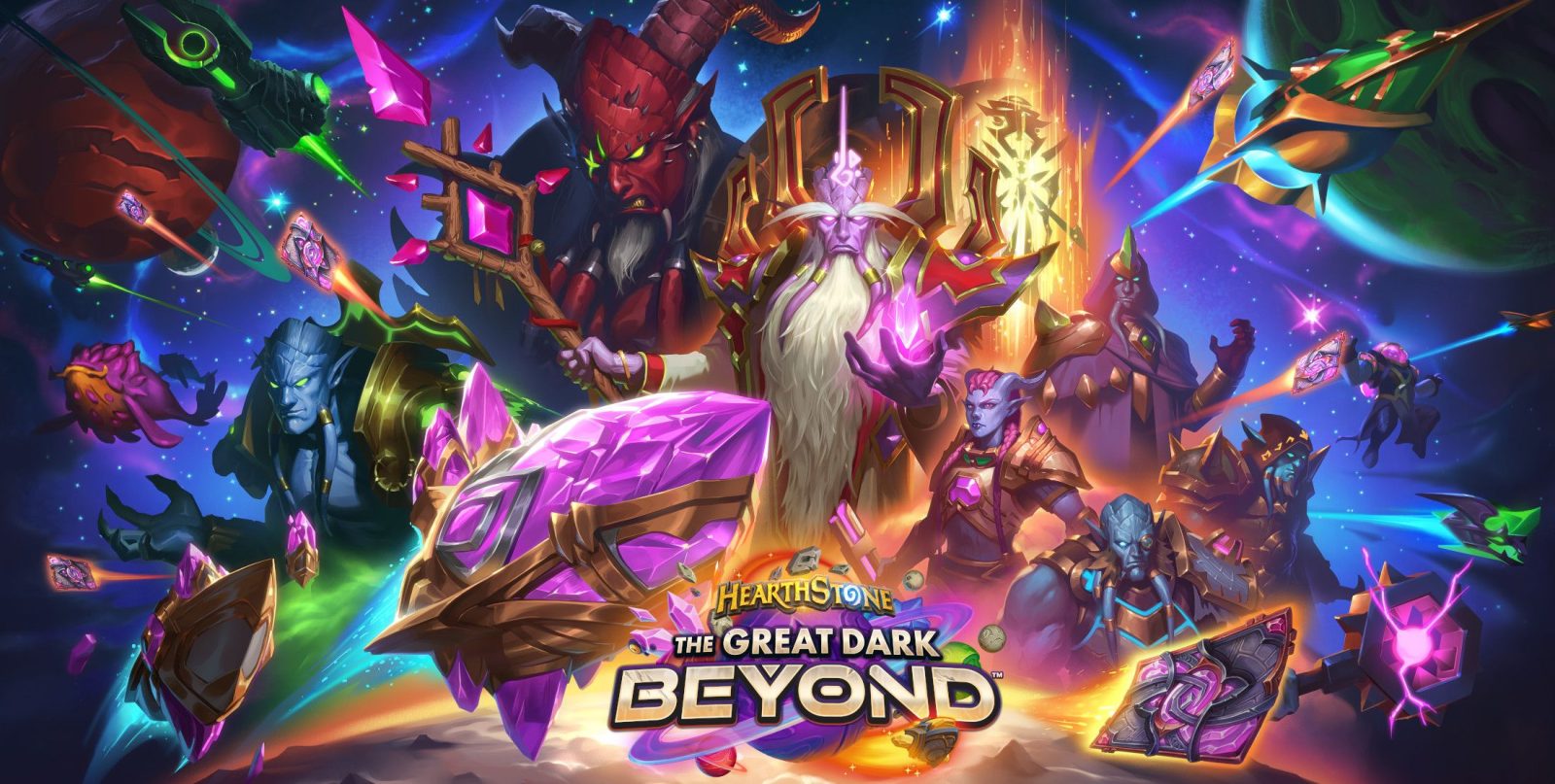
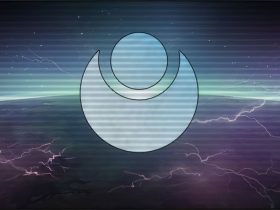
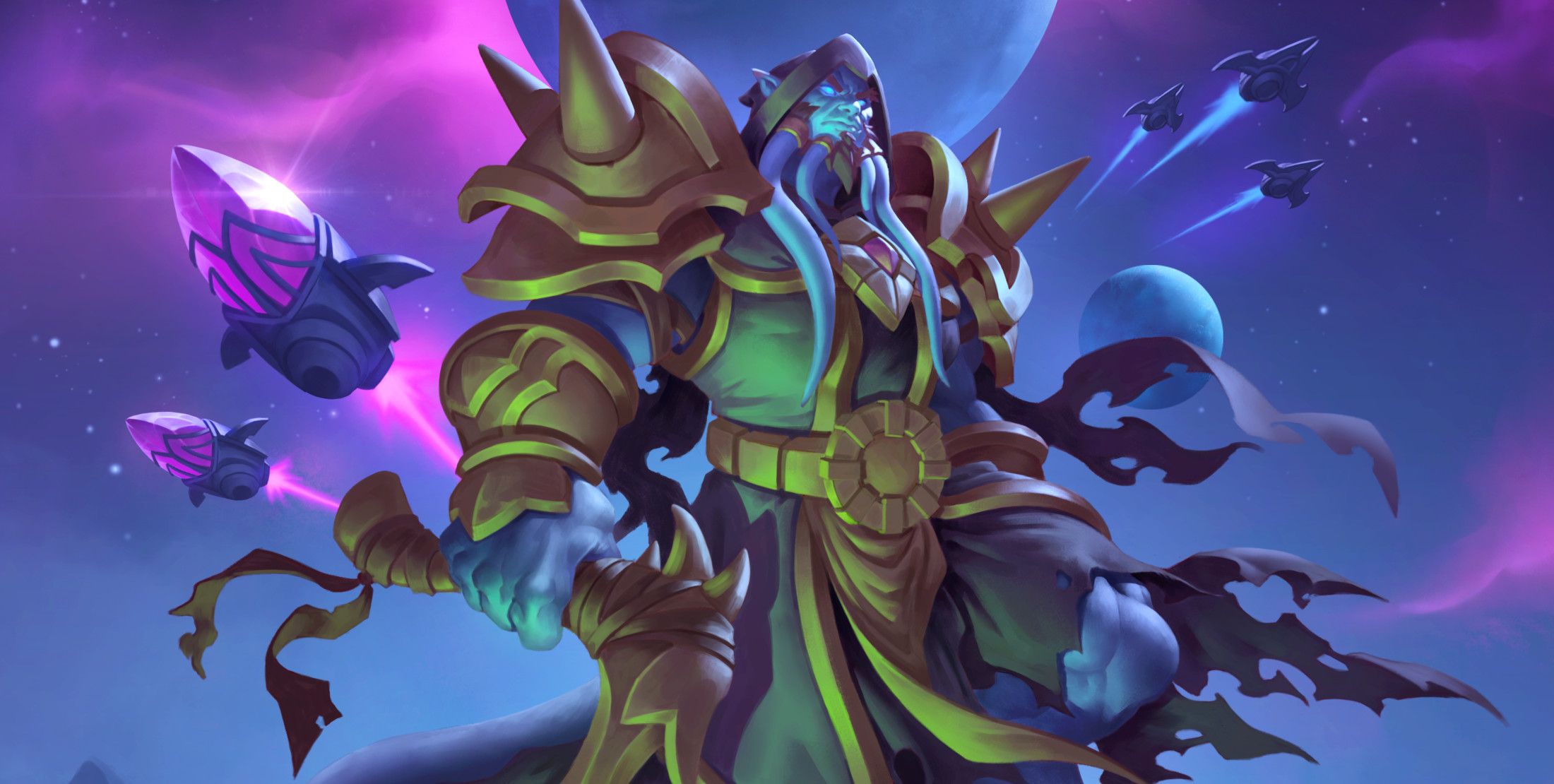
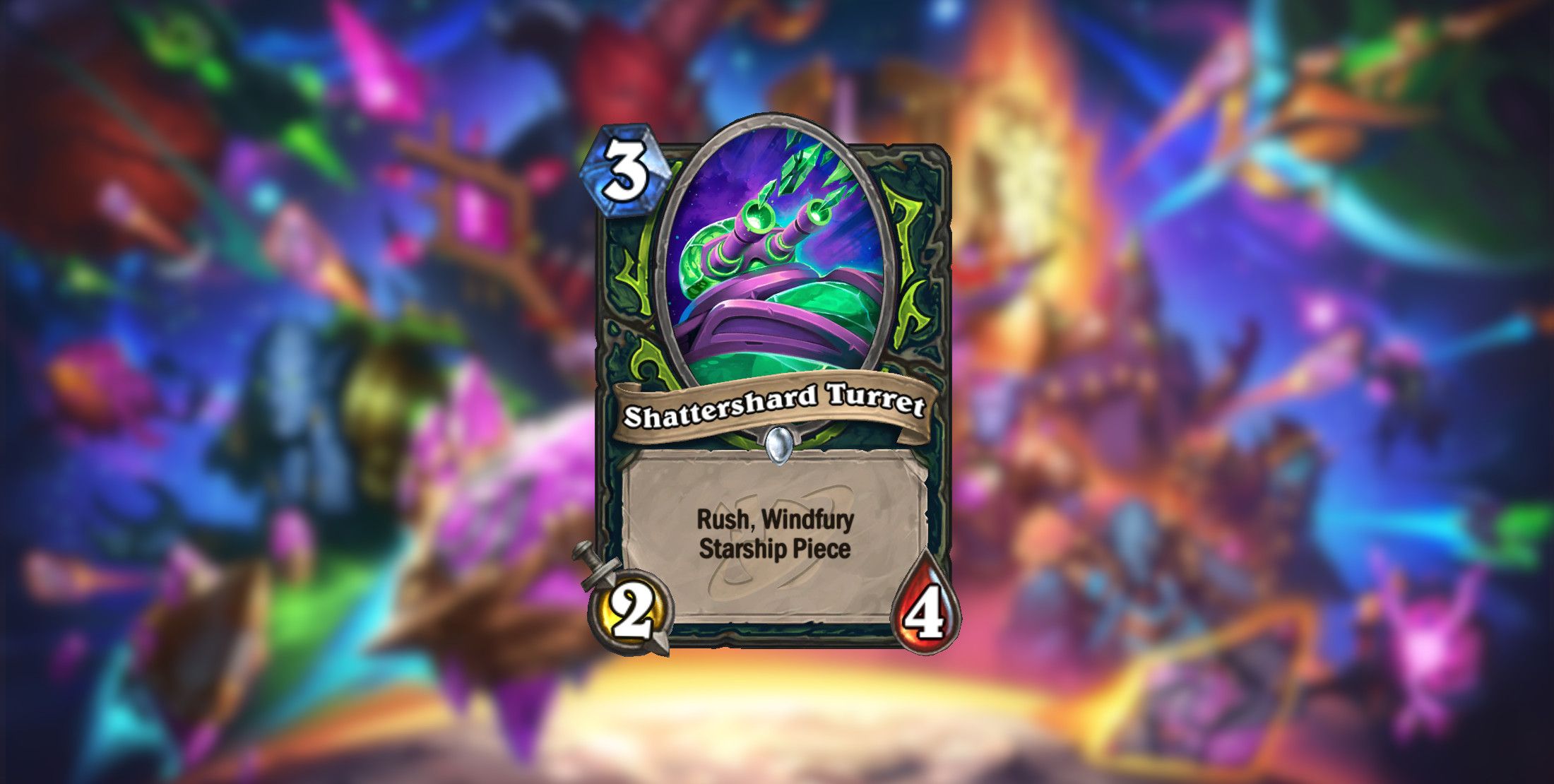
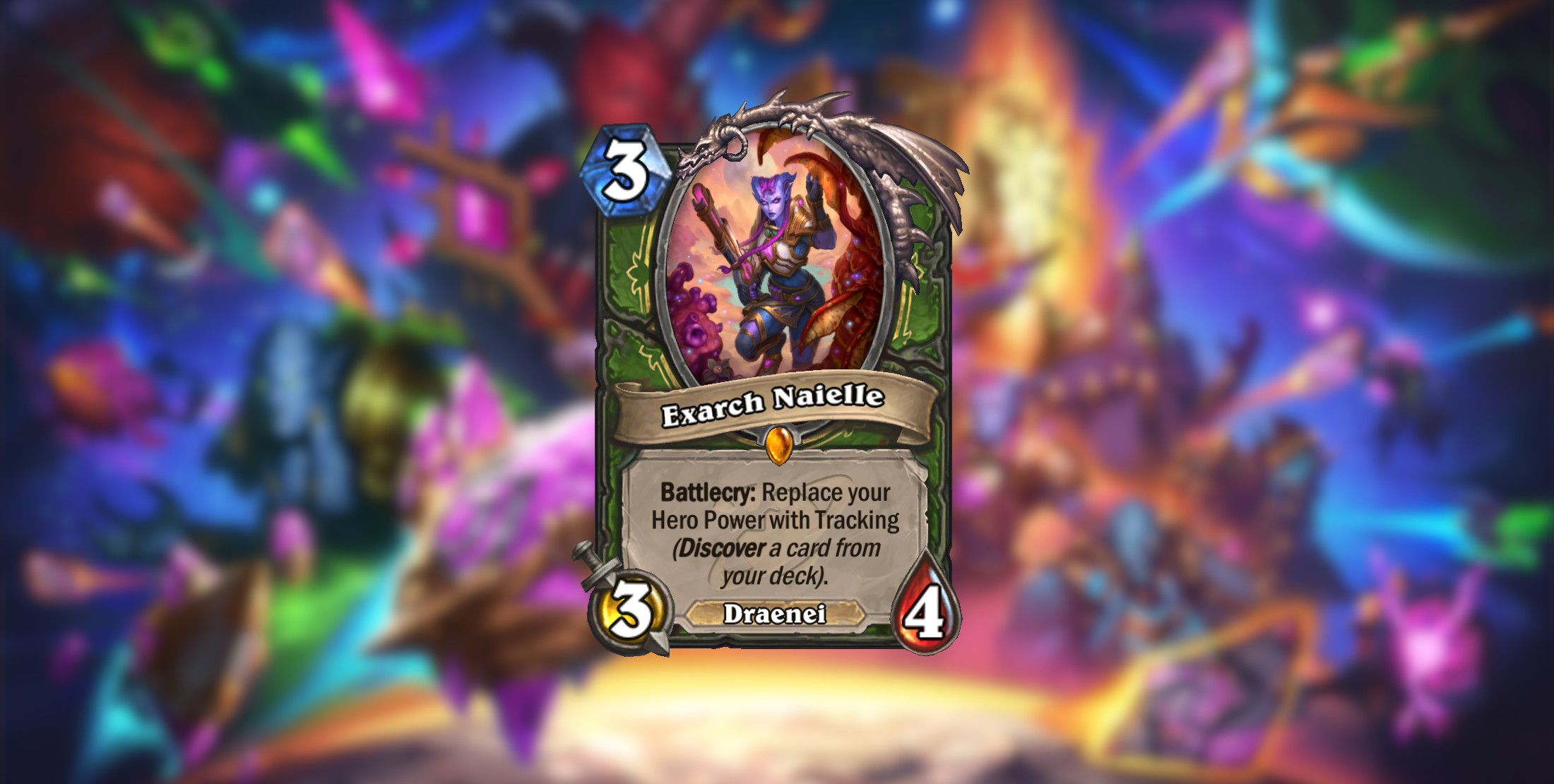
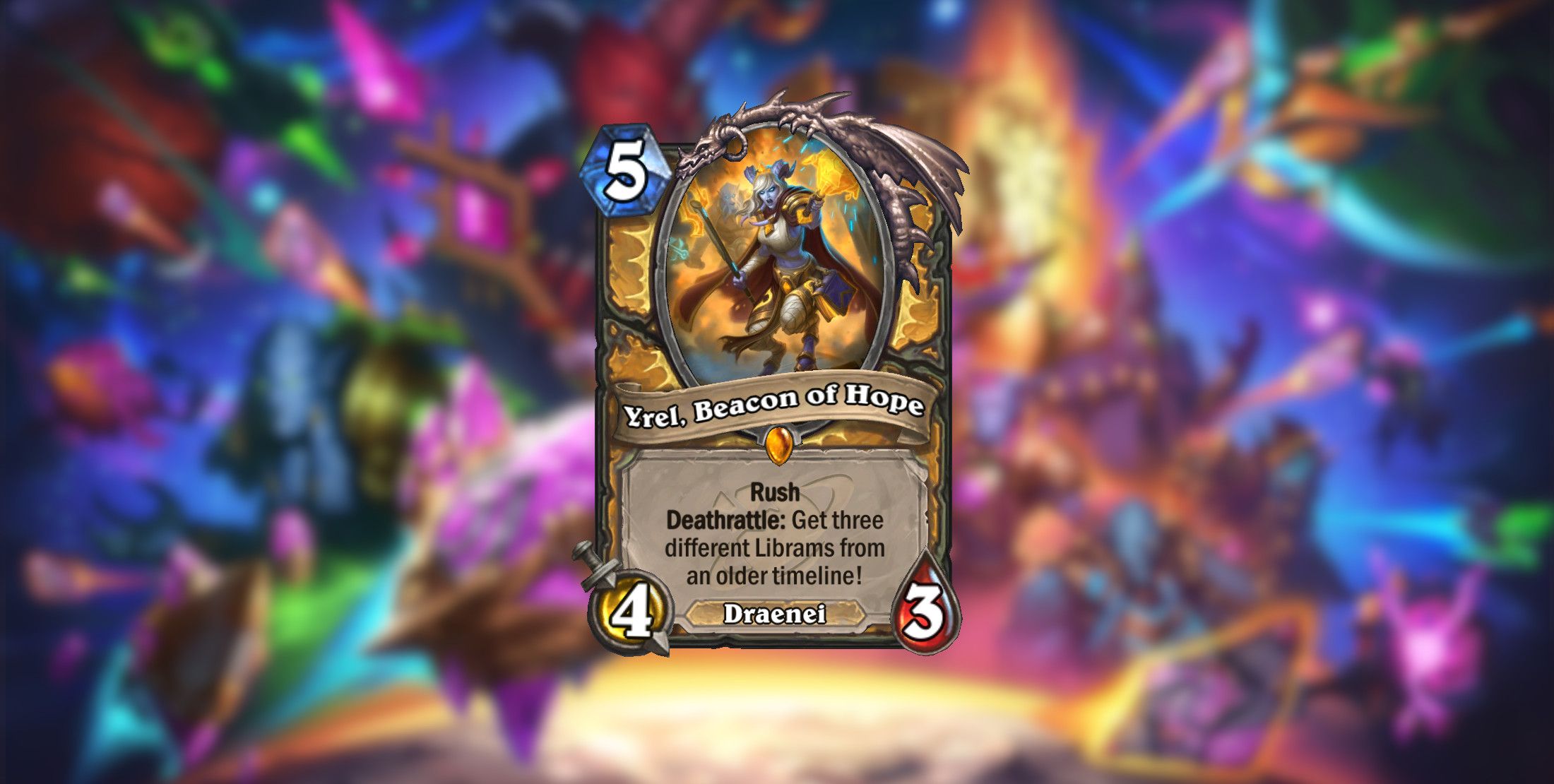
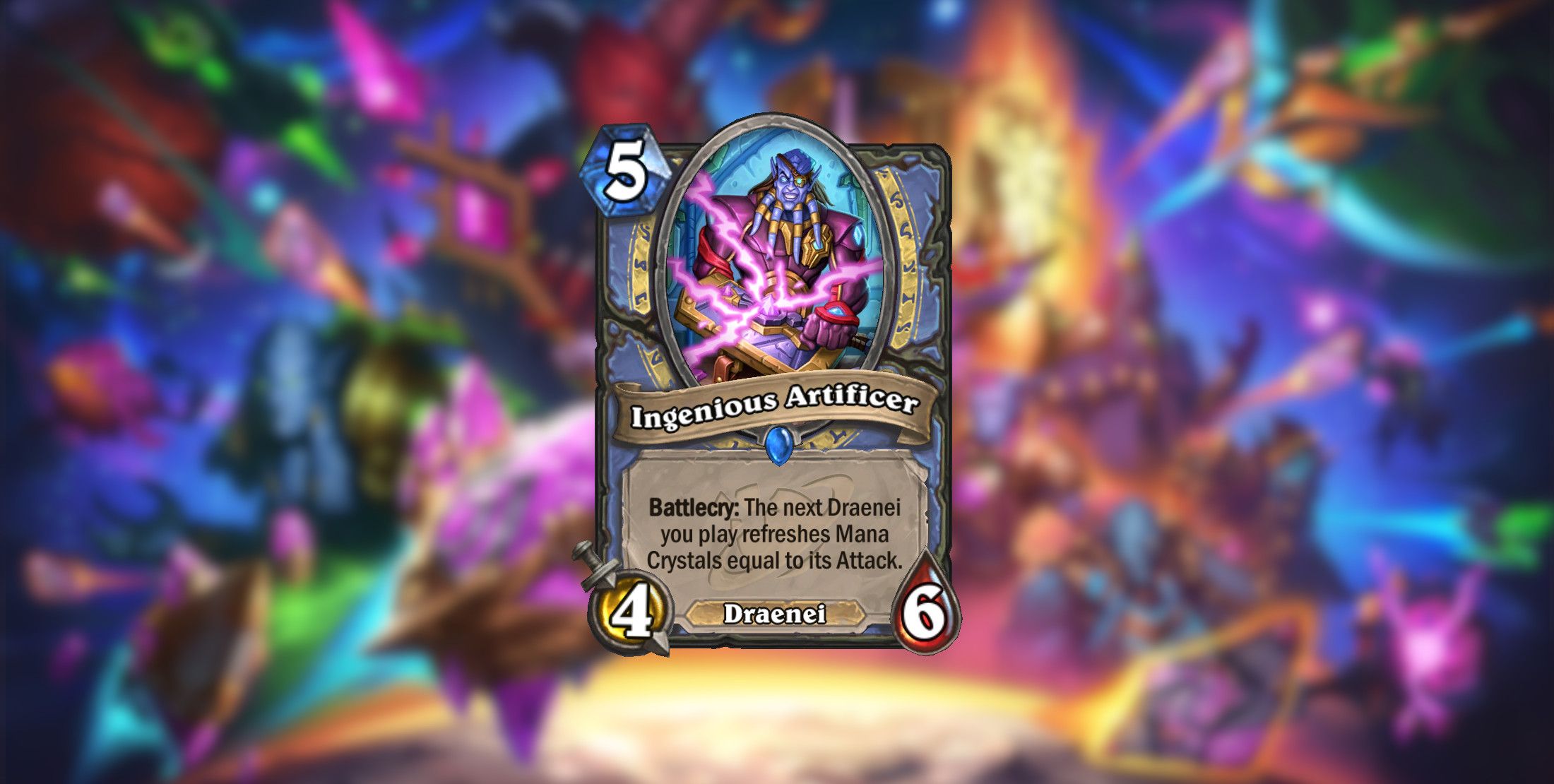

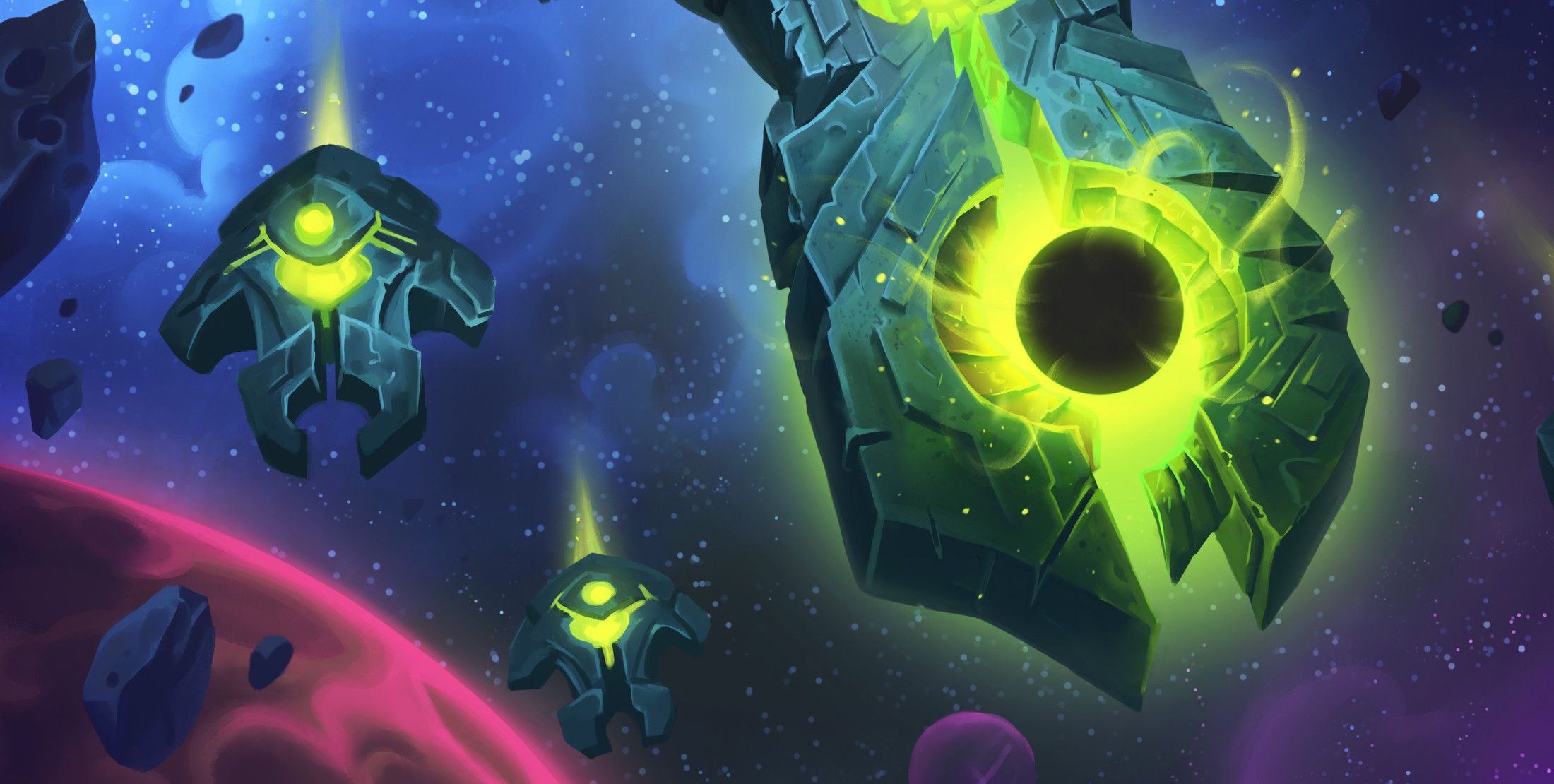


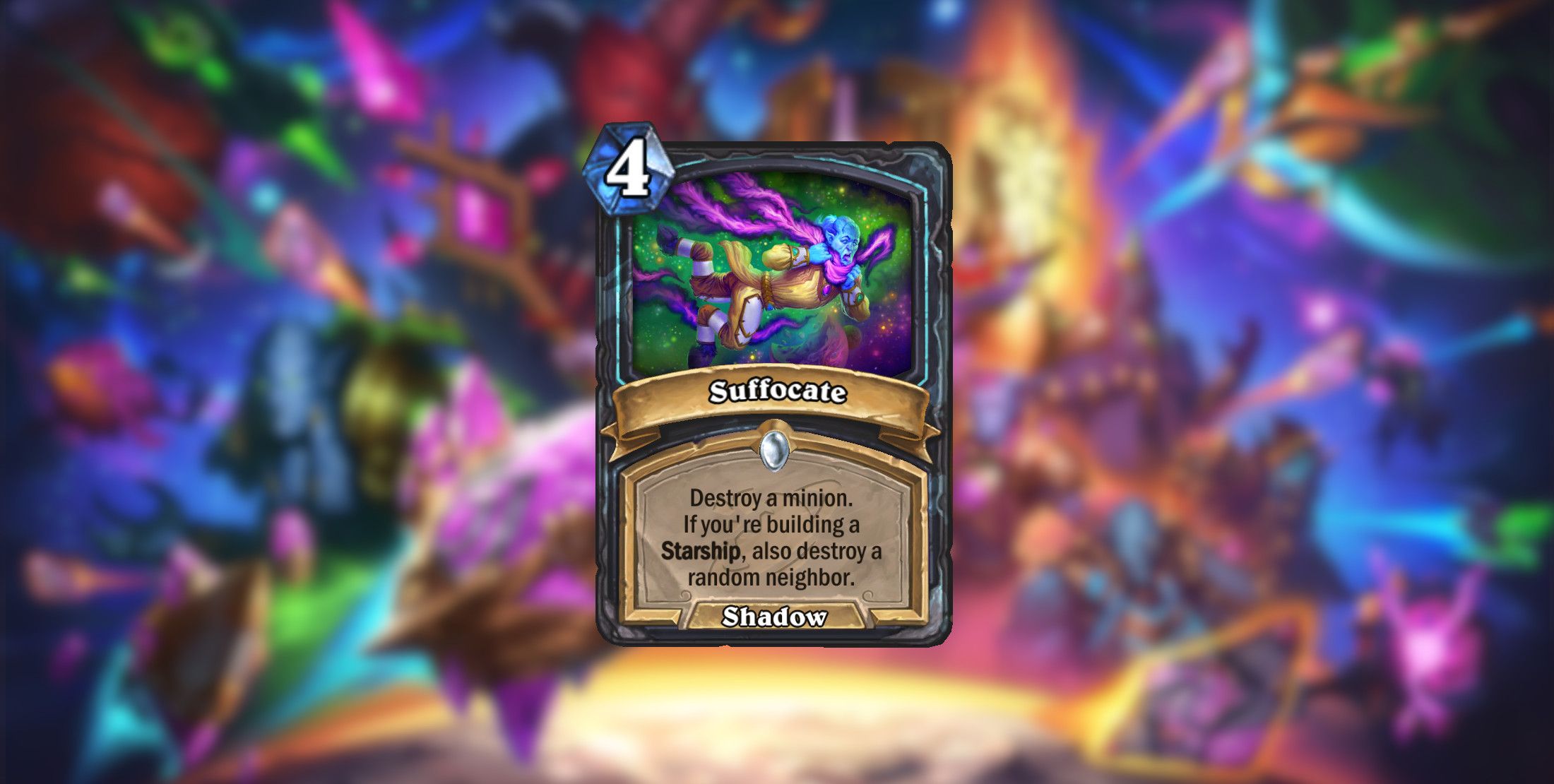

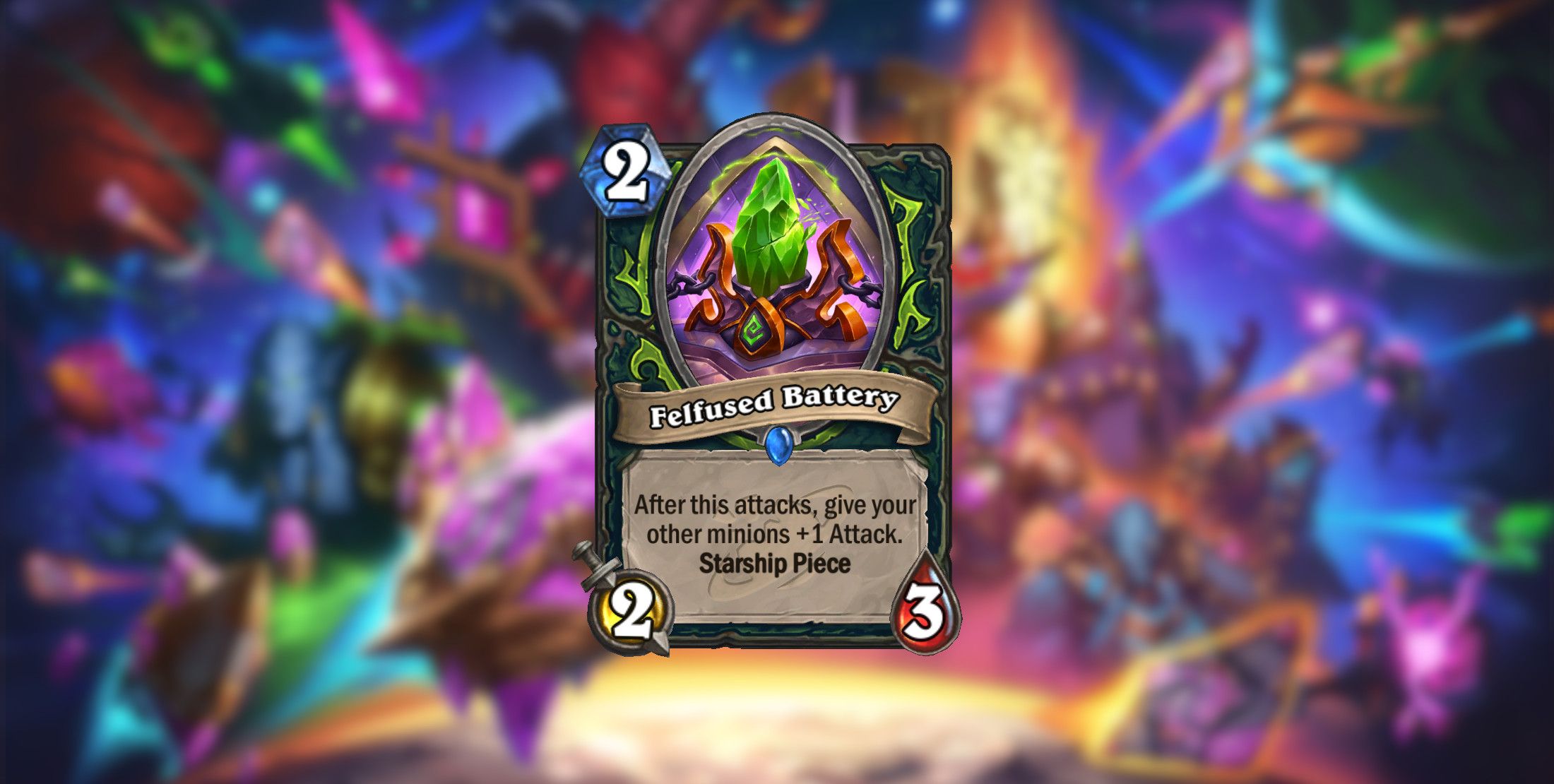
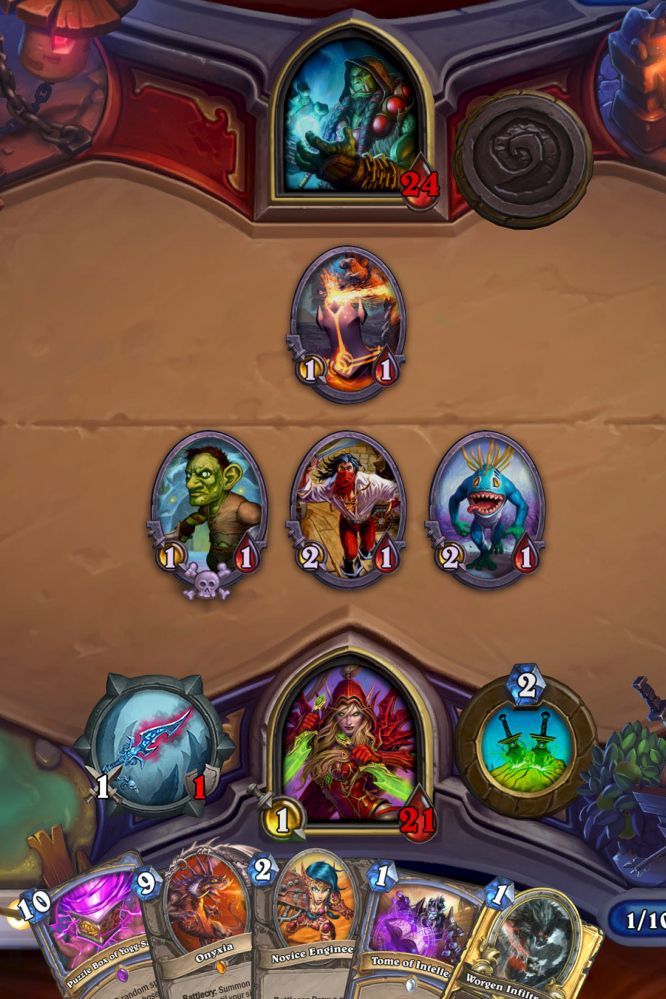
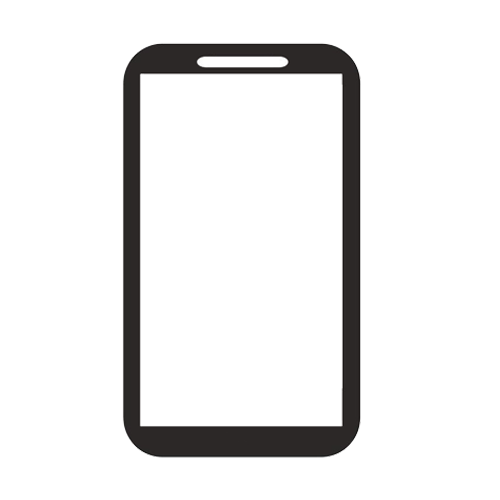

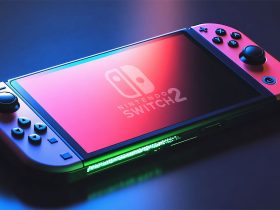
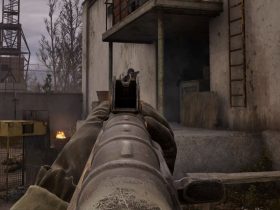
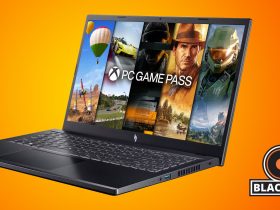
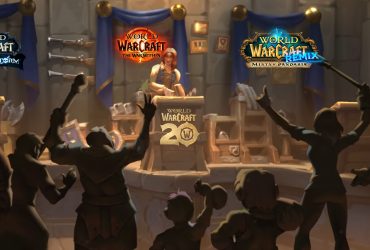
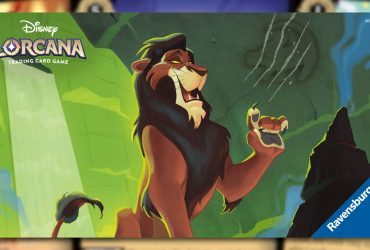
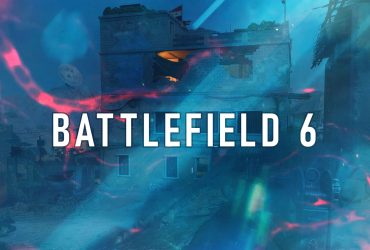
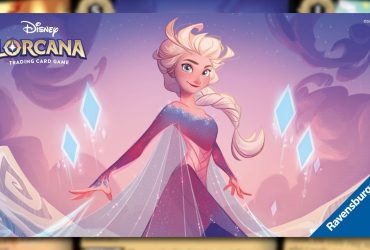
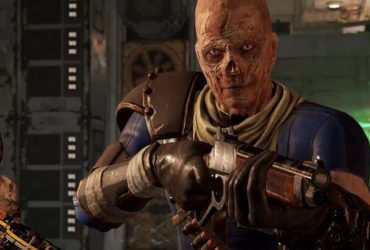
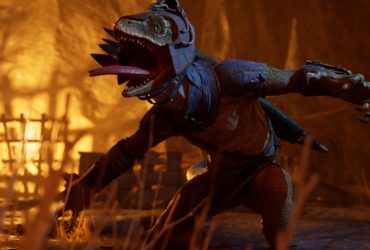
Leave a Reply